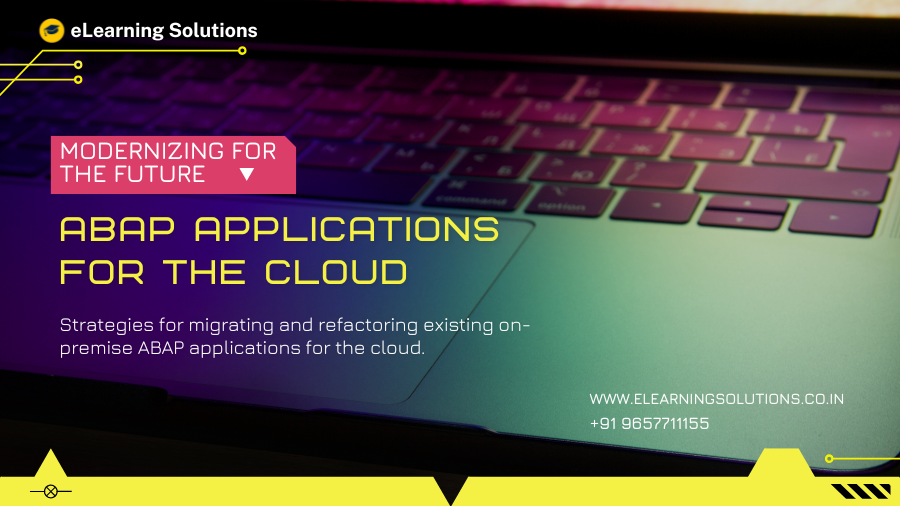In our previous blogs, we explored the exciting world of ABAP on Cloud and its numerous advantages for businesses. Now, let’s delve into the practical aspects: how to modernize your existing ABAP Applications for the Cloud environment.
Modernization Strategies for ABAP on Cloud
Migrating your on-premise ABAP Applications for the Cloud isn’t a one-size-fits-all approach. Here are key strategies to consider:
- Lift and Shift: The simplest approach, suitable for stable and low-maintenance applications. It involves physically moving the application to the cloud with minimal modifications.
- Refactoring: Ideal for applications requiring some code changes to leverage cloud-native features like microservices and scalability.
- Re-platforming: Involves rewriting specific application components using cloud-friendly paradigms like ABAP RESTful Application Programming Model (RAP).
Building Cloud-Ready Apps with ABAP RAP
ABAP RAP is a game-changer for cloud development. It empowers you to create modern, service-oriented applications that seamlessly integrate with cloud services. Here’s how RAP benefits you:
- RESTful APIs: Develop APIs that adhere to the REST (REpresentational State Transfer) architectural style, enabling easy integration with various cloud services and applications.
- Microservices Architecture: Break down complex applications into smaller, independent microservices, promoting modularity and easier maintenance.
- Improved Developer Experience: RAP leverages familiar ABAP syntax with extensions for cloud development, offering a smooth learning curve for existing ABAP developers.
Crafting a Modern User Experience with SAP Fiori
Beyond functionality, a modern user experience (UX) is crucial for cloud applications. SAP Fiori provides a comprehensive set of UI elements and tools specifically designed for SAP applications:
- Pre-built UI Components: Leverage pre-built Fiori elements like tiles, lists, and forms to create a consistent and intuitive user interface.
- Responsive Design: Ensure your applications adapt seamlessly to different devices, from desktops to tablets and smartphones.
- Theming Capabilities: Customize the look and feel of your application to match your brand identity.
Security and Management in the Cloud
Security remains paramount when migrating applications to the cloud. Here are best practices for securing and managing your ABAP applications:
- Leverage Cloud Provider Security: Cloud providers offer robust security features like access control and encryption. Utilize these features to safeguard your data and applications.
- Regular Security Audits: Conduct regular penetration testing and vulnerability assessments to identify and address potential security risks.
- Role-Based Access Control (RBAC): Implement RBAC to ensure users only have access to the data and functionalities they need.
- Version Control and CI/CD: Utilize Git version control and CI/CD pipelines to streamline development, track changes, and ensure consistent deployments.
Conclusion
By adopting the strategies outlined above, you can successfully modernize your ABAP applications for the cloud. Embrace ABAP RAP for building service-oriented applications, leverage SAP Fiori for a user-centric experience, and prioritize security best practices. With these steps, you’ll be well on your way to unlocking the full potential of ABAP on Cloud and propelling your business into the future.
This concludes our three-part blog series on ABAP on Cloud. We hope it has equipped you with valuable insights into this transformative technology. Stay tuned for future blogs where we explore more about SAP development and related topics!



 WhatsApp us
WhatsApp us